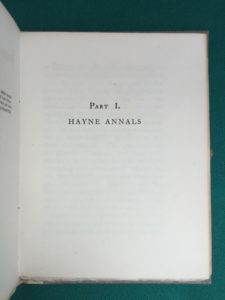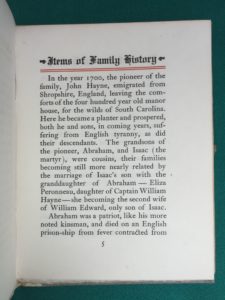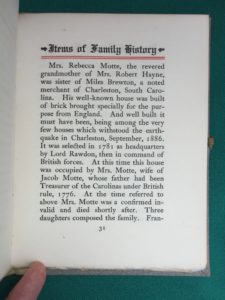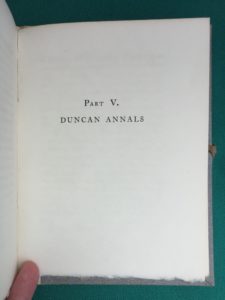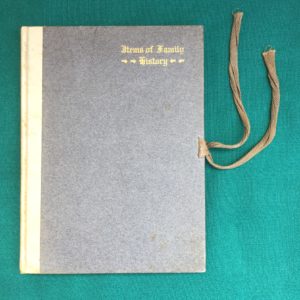
It’s a question many have pondered in middle age: how do I pass along my family history to my children and grandchildren? Nowadays one might type up some stories on Microsoft Word and enter data into ancestry.com, but if you were a rich San Franciscan at the turn of the twentieth century, you might commission a local publisher to print a book. That’s what William Alston Hayne II did, and the result was Items of Family History (1902).
Hayne (1855-1937) was born in South Carolina to a wealthy family, but they lost everything in the Civil War. The family moved to California, and there, in his forties, William fell in love with Maud Eloise Chase Bourn (1867-1948). The Bourns were also wealthy, and Hayne was embarrassed that he had little money to contribute to the match. Impulsively, he joined the throngs of fortune-seekers in the Nome Gold Rush so that he could marry Maud as a man of means, but he soon returned with the same empty pockets he had left with. Fortunately, on 27 December 1899, Maud married him anyway.
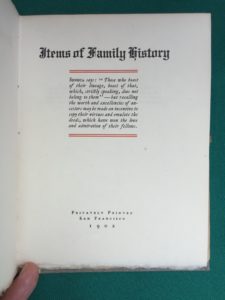
The Bourns were rolling in money: Maud’s brother was William Bowers Bourn II, who in the 1880s had revitalized the family’s struggling Empire Mine in the Sierra foothills town of Grass Valley. He was founder and president of the San Francisco Gas Company, and in the 1890s arranged a merger with the Edison Light and Power Company; that combined entity would later become Pacific Gas and Electric Company (PG&E). He was also an investor in San Francisco’s Spring Valley Water Company, and was regularly criticized by the San Francisco press as gouging the people with his high water rates. Bourn was good friends with architect Willis Polk, who first designed the Bourn Mansion on Webster St. in San Francisco, and then later their grand Filoli estate on the peninsula. Bourn served as president of the Pacific Union Club, and contributed much time and money to the planning of the 1915 Panama-Pacific International Exposition. During World War I, he was president of a group called Friends of France, and also co-created the American League of California, with the goal of providing money and manpower to the Allies in Europe. In 1920, in recognition of his service, France awarded him l’Ordre National de la Legion d’Honneur.

But back to our little book, which is concerned only with the ancestry of William Hayne. There are five short chapters, one for each of five pedigree lines: Hayne (his father), Alston (father’s mother), Motte (father’s mother’s mother), Stiles (mother), and Duncan (mother’s mother). No author is named, so either Hayne wrote the copy himself, or hired a ghostwriter. Earlier versions of the Paul Elder checklist credited Pauline Stiles, author of the Elder publication New Footprints in Old Places, as the author, and as Hayne’s mother’s maiden name was Stiles there was a possible connection. However, I have investigated William’s and Pauline’s pedigrees and can find no common ancestors, so I now believe the author attribution to be incorrect.
Only twenty-four copies were printed, the second-smallest Elder print run known after The Passing of an Oak. Presumably, Hayne printed just enough copies to give to children, grandchildren, and other relatives. The book is very finely made, with gold-embossed grey paper over boards, and high-quality laid paper. It was printed at the Twentieth Century Press, almost certainly typeset and printed by John Henry Nash.
Our thanks to Alan Thomsen for the opportunity to photograph his copy of Items of Family History.
